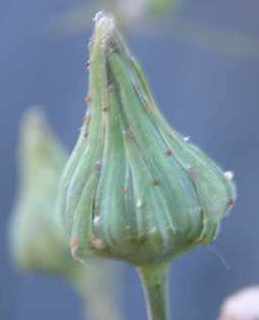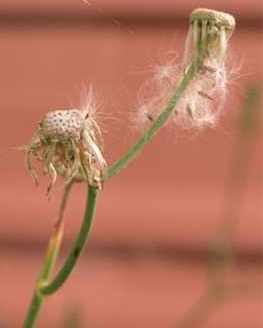Scientific Name
Sonchus oleraceus L.
Synonyms
Common Names
common sowthistle, sowthistle, annual sowthistle, common milk sowthistle, milk thistle, milkweed, thalaak, colewort, hares lettuce, soft thistle
Origin
A native of Europe, Asia and North Africa
Family
Asteraceae
Habit
An erect annual herb that grows 30-110cm high with hollow stems, exuding latex if damaged. Once considered winter dominant, now it is found all year round.
Habitat
Habitats include most soil types, fields, pastures, roadsides, gardens and edges of yards, vacant lots, construction sites, and waste places. Disturbed areas are places of strong preference. It is distributed throughout northern, central and southern NSW as well as southern and central QLD.
General Description
Stems and Leaves:
The stems are a 5 angled hollow stem that is dark green (sometimes tinted with a reddish-purple tinge). The mature plant is 30-110cm in height and arises from a deep taproot. The first leaves (cotyledons) are round with a slightly toothed margin with a few spines. They have sparse hairs on the upper leaf surface. The mature leaves are thin, soft and dark-green in colour with irregularly-toothed margins ending in small, soft spines. They become increasingly lobed with maturity. The lower stem leaves can be up to 25cm long. They have pale white to pale purple veins on them and they form a rosette(a cluster of leaves at the base of a plant often lying flat against the ground).
Flowers and Fruit:
The flower heads are yellow and are 5-6mm in diameter and are borne on stalks at the ends of branches, in an irregular terminal panicle (a compound inflorescence with a main axis and lateral branches which are further branched, and in which each axis ends in a flower or bud), with or without hairs. The flowers tend to open primarily between the hours of 6am till 11am. The fruit is an achene (a dry indehiscent, non opening, 1-seeded fruit) that is 2.5-4mm long and 1mm wide, brown, 3-ribbed on each face, wrinkled with narrow margins and compressed and obovoid in shape. The seeds are light with white parachutes of silky hairs (pappus), the silky hairs being 5-8mm long.
Distinguishing characteristics
Sonchus oleraceus has hollow stems that exude latex (whitish milk) if damaged. It has a short taproot, and deeply lobed leaves. It can be distinguished from Sonchus asper and Sonchus hydrophilus in that they both have stiff and leathery leaves, mostly smooth achenes (fruit) with ribs that are scabrous (rough to the touch) or with hairs. Sonchus oleraceus however, has soft, thin leaves and wrinkled achenes, with ribs but without hooks.
Sources & References
Auld BA, Meld RW (1992) 'Weeds an illustrated botanical guide to the weeds of Australia.' (Inkata Press: Melbourne)
Hafliger E, Basle B, Lucerne J (1975) 'Ciba-Geigy weed tables: a synoptic presentation of the flora accompanying agricultural crops (JR Geigy: Basle)
Harden GJ (Ed) (2002) 'Flora of New South Wales.' (University of New South Wales Press Ltd: Sydney, Australia)
Whibley DJ, Christensen TJ (1991) 'Garden weeds identification and control.' (Gillingham Printers Pty Ltd: Adelaide)
Wolff MA (1999) 'Winning the war on weeds: The essential gardener's guide to weed identification and control.' (Kangaroo Press: East Roseville, Australia)
Prepared by Kylie Pethybridge, 2005
Checked by Carole Campbell, 2005
Updated by Justin KY Chu, July 2005
Checked by Dr Peter Michael, July 2005


